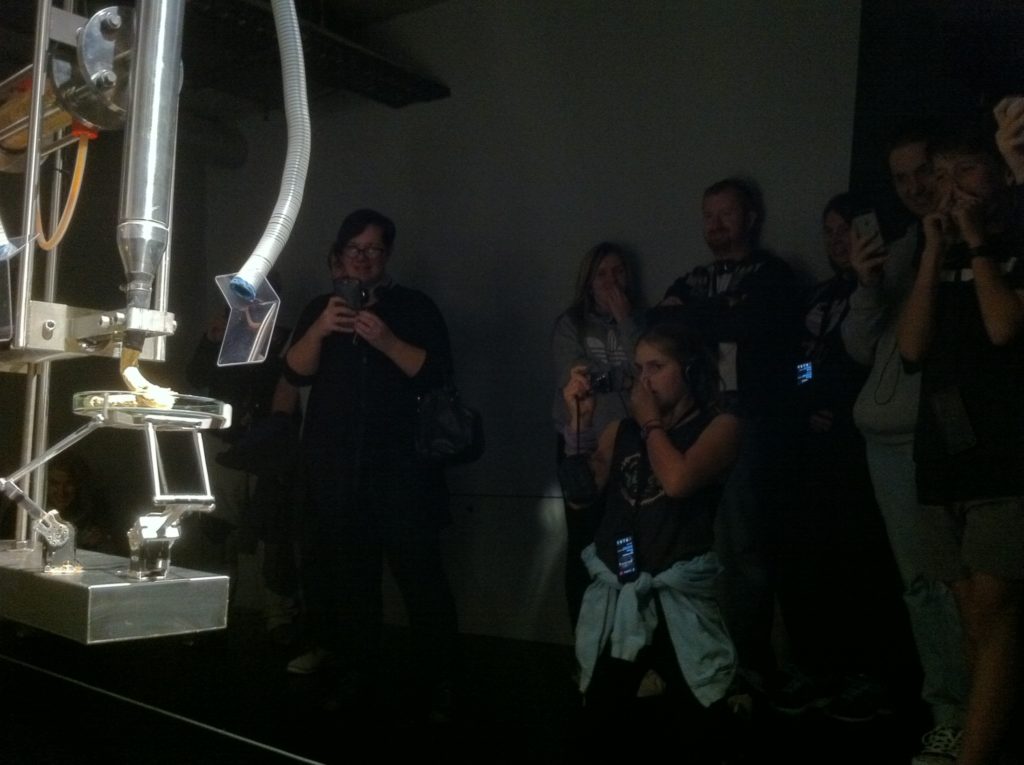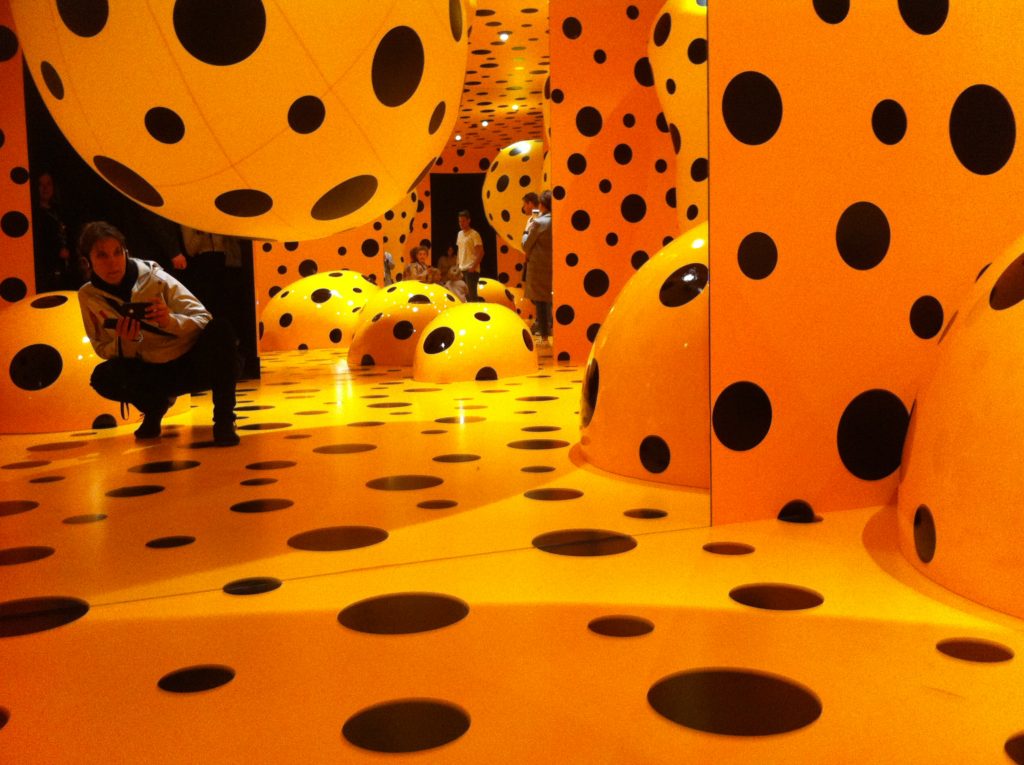Hate is a strong word, my friends. Let’s say the feeling is actually repulsion. And I guess what I’m really repulsed by is”¦
”¦ not “art,” but boredom. Most art is sooooooo boring. Can I get an amen?! It just sits there, on the wall. A visual buffet of some random stuff, trying unsuccessfully to entice not-hungry people like me.

Let’s take the Vatican, for instance. That place is chock full of the kind of art that makes me yawn. #sorrynotsorry photo: Ian Scott
I mean, sure. It’s cool that some people have the talent to copy a visual onto a canvas. When I actually know that person, I think it’s particularly awesome. Or when the art has a story — when it made a splash, I get interested. When it makes me question what I really think about something, when it makes me think, suddenly I start LOVING art.
MONA. The Museum of Old and New Art.
While its boring name belies the riveting experience inside, don’t be fooled.
MONA is what you get when an eccentric genius who clearly LOVES to think starts collecting art. Then he decides to make a giant, multi-story cave to put it all in. And he lets the public come gawk.
The collection claims to covering the “usual MONA themes of sex and death.” Australians (the museum is in Hobart, Tasmania in Australia) often comment that it’s all very “confronting,” but they find many things confronting. I found it all riveting.
The sandstone cave.
The dark environment conducive to thinking about death and sex.
The word waterfall metaphor for how information became our nemsis, stunting our capacity for ethical growth. A flood of information — a word at time – is flashed at the viewer on temporary streams of water at a calculated to allow the brain to fully perceive without being able to absorb any meaning.
The human-free, shit making machine.
The people crowded around photographing the machine taking its daily shit.

The captive audience can’t look.. but they can’t look away either. The machine contains all the enzymes necessary for digestion, farting, and a smelly solid end product. The 13 hour process includes introducing pancreatin and lesitin in pill form directly into the stomach since the machine has no organs. I also saw quiche, carrot cake and warm water introduced via a grinding machine while the smell of outhouse hung in the air. The artists politely suggests most of art is crap and notes it’s interesting that no human is required for the bacteria to use all that energy.
The bloated Porsche critiquing consumerism and greed.
The cubes of beautiful pyrite aligned in a cylinder.
The joyful playroom conceived by an 87-year old female Japanese artist.

How can you not want to frolic in this room?!
The 77 vulvas hung at face height.
The women who offered their cunts in the name of young women being free of growing up with fear, ignorance and loathing of their bodies and sexuality.
And best of all, the brilliant e-guides.
The “O”
MONA presents information about its art in a most clever way. Want to listen? They have audio. Want to read? They’ve got words from both a certified, pedigreed “art wank” and a plebe (often the museum owner — whose self-deprecation is delicious.1He says things like, “you could either get drunk and run someone down, or”¦ you could build a museum.”)
Hold the little device in your hand, put the earphones on, and watch the screen light up with “art near you” while you wander. Listen if you want, read if you want, or just look at what’s in front of you.
You can be a receptacle for an art piece’s boring biography, like usual, but The “O” almost allows you to have a conversation with others about what’s in front of you. The variety of perspectives and insights offered via the device (Art Wank, Gonzo, Ideas) invite you to actually think. “Save your visit” and access the same info online to keep thinking long after you leave.
Bet You Never Knew”¦
The “O” taught me tidbits that might never fit on a museum placard. Things like:
- Attractive body *proportions* are same worldwide, even when culturally valuable sizes are different.
- Being fat actually makes you dumber. “The fatter you are, the more the brain shrinks,” the artist explained in an interview about his fat Porsche. He thinks worldwide weight gain is “an instrument of restriction, in a way.” He talked about the social and economic impacts of obesity as well as how obesity negatively affects our societies and economies.

Bloated Porsche. What does it mean? So many things.
- The most attractive face”¦ doesn’t belong to anyone. People are most drawn to a composite of many faces, likely because the more average a face is, the closer it is to the most common phenotype natural selection is selecting for.
- Testosterone is responsible for stronger jaws and brow ridges.
- We give our (conscious) minds more power than they may deserve. Our senses take in 20 million bits of information per second, but we can only process 15 to 20 of those bits consciously. Yet, the artist explains, “consciousness thinks by dipping its toe into the river that it knows the river and even that it is in control of it.”
The Gift of Questions
It’s possible I like wondering about things more than I like actual answers. Because MONA’s evocative art makes a statement or communicates an idea, it gave rise to many questions. E.g.:
- Is it true that a trait of many successful artists is the obstinacy to keep producing what they want and are driven to produce in the face if heavy criticism?
- Do artists have bigger egos or no egos? What does it take to bare your soul to the world?
- Are “chance and the unconscious forces that propel our behavior” as intrinsic to the finished product as the museum’s creator thinks they are?
If you travel to Tasmania, go to MONA. Everyone. Okay, maybe uptight, boring people should give it a miss. If you think you hate art, or aren’t an art person”¦ give MONA a chance!
Happy Travels! ♣
References
| ↑1 | He says things like, “you could either get drunk and run someone down, or”¦ you could build a museum.” |
|---|




2 pings